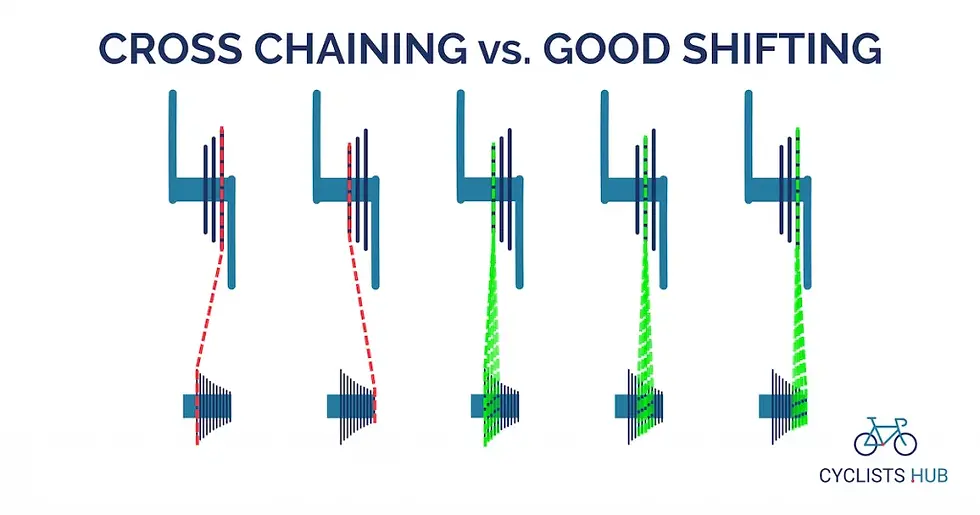5 Ways to Save Your Drive Train and Your Money
- Sprout Plankton
- Dec 3, 2022
- 3 min read

The health of the drive train on your bicycle is essential to your ride being smooth, safe, and efficient. There are a few things you can do to extend the life of your drive train.
1. Clean Your Chain
First, put a conservative amount of isopropyl alcohol on the entire chain (use a spray bottle or poke a hole in the lid of the bottle), then use a stiff wire brush (from your local hardware store) to brush all sides of the chain, next run the chain through an old rag, lube it up (using one drop for each link), run it through the rag again, and let sit for 20 mins. After it has set in, lube and rag again. This will clean off most dirt and grime that will gum up your drive train. If there is sand on your chain, first, blast your chain with pressurized hose water and then follow the aforementioned method.
2. Replace Your Chain
If you're an avid rider it's a good idea to buy a chain measuring tool. When the reading is at the very beginning of 0.75, trying to catch it at that exact moment, it is time to change your chain. If you don't want to invest in a chain checker tool, just ride up to your favorite bike shop and ask them to check it for you. If they charge you for that or make a big stink I'd find a new bike shop to call your own.
If you wait too long to change your chain it will become stretched, thin, and possibly dangerous, as well as expensive. Once the chain measurement reading is a ways into the 0.75 range it become necessary to replace the chain, cassette/freewheel, and in extreme cases the drive-side crank all at once. Changing the chain regularly will extend the life of your other drive train parts.
3. Don't Cross-Chain

Cross-chaining is one of the most common causes we see for an array of shifting and drive train related issues, as well as premature stretching of the chain itself. Cross-chaining is when the chain is in it's most "stretched" position, the position under most tension. This happens when the chain is in "big big" or "small small" in reference to size of the gear cogs. Cross-chaining is when you're in your big chainring and the biggest cog on your back cassette, or on your small chainring and your smallest cog.This is why it's important to utilize all of your gears to maximize efficiency and save your drive train. For example, say you have 7 speeds in the rear and 3 speeds in the front, you should never be in gear 7 in the rear and 1 in the front and similarly gear 1 in the rear and 3 in the front. To use the gears to their fullest potential keep the chain with as little angle as possible while riding. So if you shift down to gear 4 in the rear because you're going up a little hill make sure to shift the to gear 2 in front (the middle gear) so as to diminish the tension being put on the chain.
4. Use All of Your Gears
If you notice that you're always riding in the same one or two gears, this section is for you. Riding in the same gears causes premature wear on your rear cogs and/or from chain rings. This will wear your drive train out quickly. Work with yourself and learn how to use all of your gears more or less equally.
5. If Something is Loose Have it Looked at Right Quick
When parts are loose they are not only causing un-due wear on the frame and various parts but they are creating potentially disastrously unsafe riding conditions for you. Please bring your bike by a shop and get things tightened up. We don't want to see anyone get hurt.
Stay tuned for more blog posts on how to keep tabs on the health of your bike while ultimately saving money!
TL;DR- Find a bike shop you trust, feel good around, and want to support and come by when you feel like something is up with your bike or you want a part checked out (re: chain length).




Comments